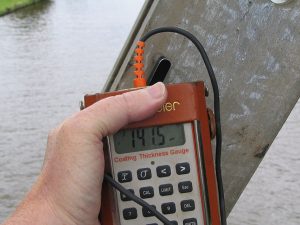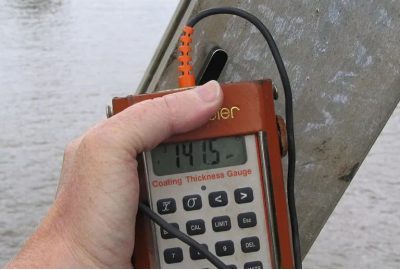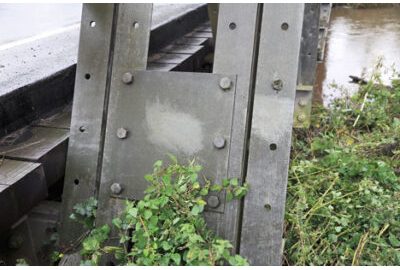It is astonishing to think that a coating, just thicker than a sheet of A4 paper, can protect a steel structure for the better part of one hundred years.
What is the thickness of a galvanized coating?
When it comes to the specification of hot dip galvanizing, most contractors know that to be standards compliant, 7mm steel requires an average coating thickness of ‘85 microns’. It is a simple industry standard that is easy to retain and is applicable to many construction needs.
But how does that microscopic coating translate into performance? And what does ‘85 microns’, actually look like?
 Under the international system of units (SI) the micron is represented by the Greek symbol μm, which signifies one thousandth of a millimetre. To put that in perspective, it is often cited that the human eye can perceive objects no smaller than 40 microns and that the average human hair is a mere 50 microns in diameter. Cling film comes in at 10-12 microns thick and a typical bacterium is 1-10 microns long.
Under the international system of units (SI) the micron is represented by the Greek symbol μm, which signifies one thousandth of a millimetre. To put that in perspective, it is often cited that the human eye can perceive objects no smaller than 40 microns and that the average human hair is a mere 50 microns in diameter. Cling film comes in at 10-12 microns thick and a typical bacterium is 1-10 microns long.
In fact, an 85 micron galvanized coating can last for nearly a century in many UK atmospheric settings (click to see corrosion rates in your area). Not bad for a coating which, in cross section, is barely visible to the naked eye.
Hot Dip Galvanizing Thickness and Steel Thickness
When batch hot dip galvanizing, it is important to remember that there is a relationship between the thickness of your steel and the thickness of the resulting zinc coating. These variables are represented in the table below.

In general, the thicker the steel, the thicker the zinc coating obtained and the longer the lifespan of your protection. What these numbers conceal is that hot dip galvanizing produces a coating which is bonded metallurgically to the steel.
In addition to steel thickness, the composition of the steel alloy itself is also relevant. Silicon which is used to deoxidise steel will affect coating thickness too: the more silicon present, the more reactive the zinc and the greater the thickness of the galvanized coating.
The corrosion rate of a galvanized coating is generally linear.
How this microscopic coating then weathers is predictable but complex and fluctuates with atmospheric conditions. In most dry inland situations this can be infinitesimally slow, less than 1 micron per year, and unlike other coatings, a galvanized coating deteriorates in a linear fashion. As long as the environment remains stable, case studies show that the coating throws up no unpleasant surprises and can be relied upon.
Moreover, in the UK and Ireland, as sulphur dioxide levels have fallen, corrosion protection has been extended. It does indeed pay to know your microns.




Join the conversation
Make a comment